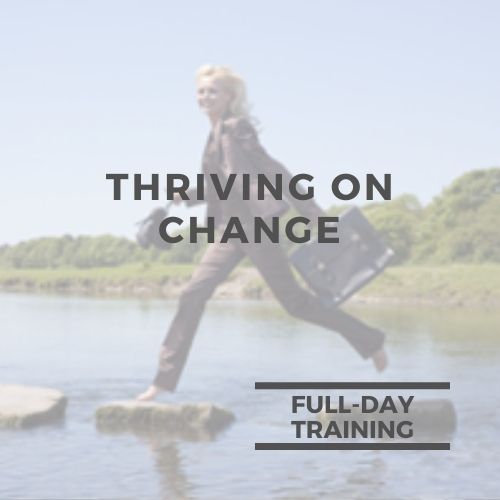Thriving on Change
Have you ever felt that change is happening at you, around you, or even to you, and there’s not much you can do about it? Did you know that regardless of your role, you have an impact on the way change goes in your organization? How do you get through a change – any change – with less pain, disruption, and dysfunction. That’s what this whole course is about!
Overview:
This hands-on course takes a close look at effective change and transition strategies, starting with laying the foundation of change management: what is change, how do we perceive it, and what models exist to describe the change and transition process, and to help us through the tough times.
From there, participants have a chance to reflect on their own perception of change and learn to identify how others around them perceive change. When we’re moving at a different pace than the people around us, it creates friction. How do we recognize that friction, and what do we do about it?
The second half is dedicated to understanding what to do about it – how do you lead yourself, and positively influence those around you through periods of change and transition. We cover key principles and practical tools around planning, buy-in, and communication.
An engaging blend of leader-led instruction and hands-on application full of techniques, and tips to apply right after class, and a set of strategies to help you continue to improve.
Objectives:
By attending this course, participants will:
- Recognize the characteristics of change and transition
- Discover more about your own appetite for change and how that impacts your day
- Encounter strategies and tactics to help those around you through change
- Gain tools to help ensure planning, communication, and buy-in
- Explore foundational concepts in influencing change for the better, with a lens towards real life application
- Examine the common pitfalls of change and transition, why it often fails and how to ensure success
- Apply change and transition concepts to the changes that you face
- Identify common moments in the change cycle, and what people need to hear at those moments





